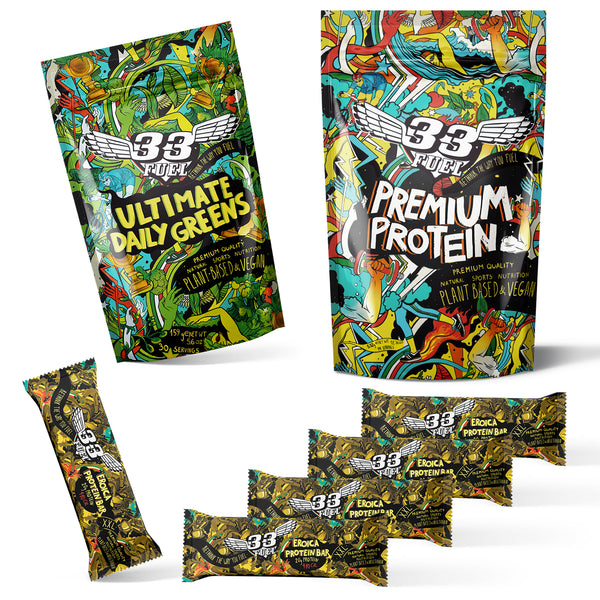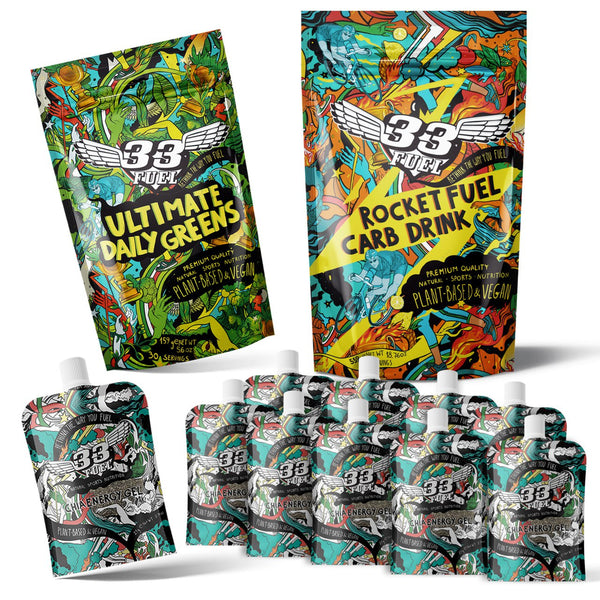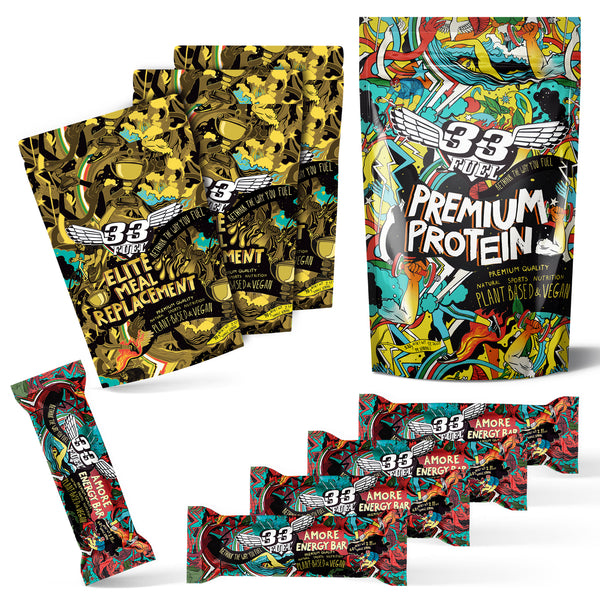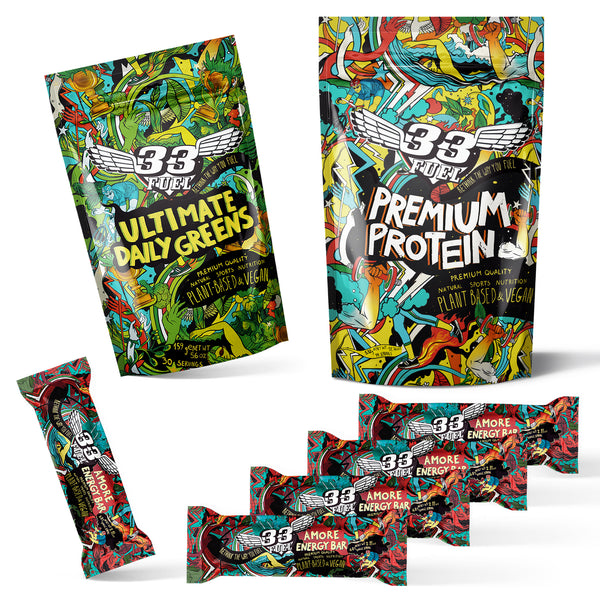When Sports Nutrition Science Goes Bad

A peek into the sports drinks industry reveals how sports nutrition turned science on its head in the name of marketing. The same tricks have been used again and again by the sports nutrition industry to sell you unhealthy stuff you don't need. This is science gone bad and here's how it works...
There has been some crazy sh*t done in the name of marketing, so making some science seem cleverer than it is doesn’t make the top ten of all time marketing mishaps. Mitsubishi calling a car a Pajero and then wondering why Spanish sales were slow before learning ‘pajero’ means ‘w*nker’ in Spanish is a more obvious target for example.
Shop our award-winning sports nutrition
Best Sellers
But where the sports nutrition marketing really sucks is when it's used to sell unhealthy old tosh to an audience specifically seeking health and performance. Which is why we salute award winning investigative journalist and medical ace Dr Deborah Cohen for her work looking into the truth behind sports drinks, which uncovered many tricks of the trade.
These tricks play out repeatedly across all areas of sports nutrition from gels and bars to protein and powders, and Cohen gives a brilliant summary of her findings in a recent BJSM podcast
Here are the highlights:
Are dodgy sports nutrition tricks running your performance downhill?
Lesson 1: Science sells
As Cohen puts it, the sports drink industry, “realised very quickly science sells”.
But at the time (this being the dim and distant 1980s) there was no science for sports drinks. So the industry made some.
Cohen explains how the sports drink pioneers at Gatorade “held scientific symposia because they needed to create a science around sports drinks,” with the result that pretty soon they had data and formula available for instant performance enhancement for runners, cyclists and triathletes everywhere.
“They were scientific in their messaging,” says Cohen, “telling people to calculate their sweat loss, their work rate to try and calculate how much fluid they would lose if they were doing an endurance event and then work out how much they need to drink”.
Lesson 2: Science quantity trumps science quality
Then things began going downhill, fast.

When money talks louder than scientific facts in sports nutrition, athletes are the losers
Because the messages the industry was putting out as a result of this science seemed off, particularly to a medical doctor.
“There were all sorts of things that we saw [in the messaging],” says Cohen, “things like ‘drink ahead of your thirst’, and ‘your brain can’t tell you when you’re feeling thirsty’.
“Which was counter to everything I was taught at medical school - I thought it was your brain that told you when you were thirsty”
To anyone who’s ever heard the outdated nutrition mantra ‘eat before you’re hungry’ (and suffered the unpleasant consequences of trying to do so) this will sound all too familiar.
Because the science behind these claims simply wasn’t very good.
As Cohen puts it, “there were all sorts of tricks that were going on in the studies”.
Cohen and her team were given over 100 clinical trials carried out by the main sports drink producers, which is where the surprises started popping out of the woodwork.
“For someone who’s used to pharmaceutical research - which I normally look at - these weren’t clinical trials. They were studies of various types and often quite poorly conducted.
“I remember one study, they asked the participants to fast overnight, and then one group had water and one group had sports drink.
“Well, it’s quite obvious that the sports drink group are going to perform a bit better because they’ve had an injection of sugar, where the people with water haven’t.
As Cohen explains, “you can infer very little from that”, while she later adds, “there was no good evidence for the claims, and the science was fairly poor”.

Weird science.In many cases you’d be better letting a pair of teenagers with bras on their heads do the experiments for all the value the end results deliver (apologies if you didn’t grow up in the 80s and have no idea what this picture is from - you can find out what you’re missing here)
If this sounds like a repeat of another story, that’s because it is.
When a separate team from Oxford University examined a load of claims behind a variety of sports products for another investigation they too found a ‘worrying lack of evidence backing them up’.
Lesson 3: control the message at its source
Having created lots of hokey science for products and then relying on the authority inherent in white coats, boffins and spreadsheets to make people fork over their cash, the next thing is to make sure your science dominates the conversation.
How?
First, you start with the source - scientific journals.
Here Cohen says that in many cases, the sports drink industry's “main advisors were on the payroll of the [journal] companies and people said to me that you just couldn’t get studies published that showed that sports drinks didn’t have any particular effect on performance.
“So you had a massive publication bias in favour of the studies that purportedly showed that [sports drinks] did have an impact on performance… and even then the science was poor”.
Lesson 4: control the message at the top level as well
Journals are just the starting point.
Next you need to add elite credibility by hopping into bed with the world’s biggest sporting organisations.

Plant your message in the blocks with sport’s biggest organisations and watch it sprint into elite sport everywhere
Which is how, as Cohen explains, you have “experts around the world who are advisors to FIFA, the International Olympic Committee,” and others who, “were sponsored by the [sports drink] companies” and whose own advisors were also, “on the payroll of the [sports drink] companies”
The result is these august institutions begin talking up the party line too, while making sure their athletes and coaching teams do as well.
Just another reason why so many elite athletes often have terrible nutrition habits.
Endgame - don’t let poor results get in the way of great sales!
With the landscape sewn up neatly and both your science and messaging guaranteed front and centre, you can sit back safely knowing that even if it’s really obvious either products or guidelines don’t deliver results - and may even hamper performance - the story won’t see the light of day anyway.
“A senior physio at one of the national football leagues had done a study with their footballers,” [drinking to industry-recommended guidelines] says Cohen, “and they just felt sick because they had all this fluid churning around their stomachs.
“They tried to publish their research and didn’t get anywhere.”
When science attacks - how to fight back
If this is all just a bit too depressing, here’s a big old ray of sunshine.
Because we have two awesome things to help guide us through the otherwise landmine-strewn landscape of sports nutrition claims v sports nutrition reality.
Personal experience
This, my friends, counts for more than any scientific data, elite athlete recommendation, or popular behaviour (the ‘everyone’s doing it so it must be good’ syndrome).
If any sports nutrition product fails to deliver on its claims for you, or it makes you feel ill, or you simply dislike either the taste, texture or the ‘chemistry experiment’ look of the ingredients on the label, this is all you need to know.
Bin it and move on.
The internet

Don’t jump, there’s hope for finding great sports nutrition information yet and it’s called… The Internet! Stop wasting time on Angry Birds, start finding sources you trust in your quest for performance and results
The ordinary sports nutrition industry may have a chokehold on journals and the mainstream media, but both are fighting a losing battle for attention in today’s digital world.
The internet may be awash with all manner of old rubbish, but its also loaded with excellent independent thought, research and information.
Become your own professor, for your own results.
Dig deep through the digital data dump and find the trusted sources and pearls of wisdom that will power you to big time results, and big time health - you simply can’t have one without the other.
The truth is out there.
Fancy some sports nutrition without all the weird science?
Then you might want to check us out at 33Fuel.
Rather than beating you into submission with a raft of science we made up, or paying elite athletes pots of cash to say fluffy things about us on social media, we spend the money on the best possible ingredients and production quality instead.
You know, the things you’re actually paying for.
Focusing here, instead of making up science and paying off influencers, is what lets us make unique and gamechanging products.
Why not try them out and let your body be the judge.
No hokey science, no huge pay days for influencers to say nice things about us, just the best bloody ingredients for your performance. If this sounds like a refreshing change, take a look at our product range
More performance-boosting content
From the 33Fuel YouTube Channel
From the 33Fuel Podcast
From the Blog
Science in sports nutrition - do we need it
How often should you take a gel during exercise?
Why are all these athletes puking the same colour?
Performance v health - the trade off you don’t need to make
The problem with sports nutrition science
Eating cr*p - why professional athletes have terrible nutrition










